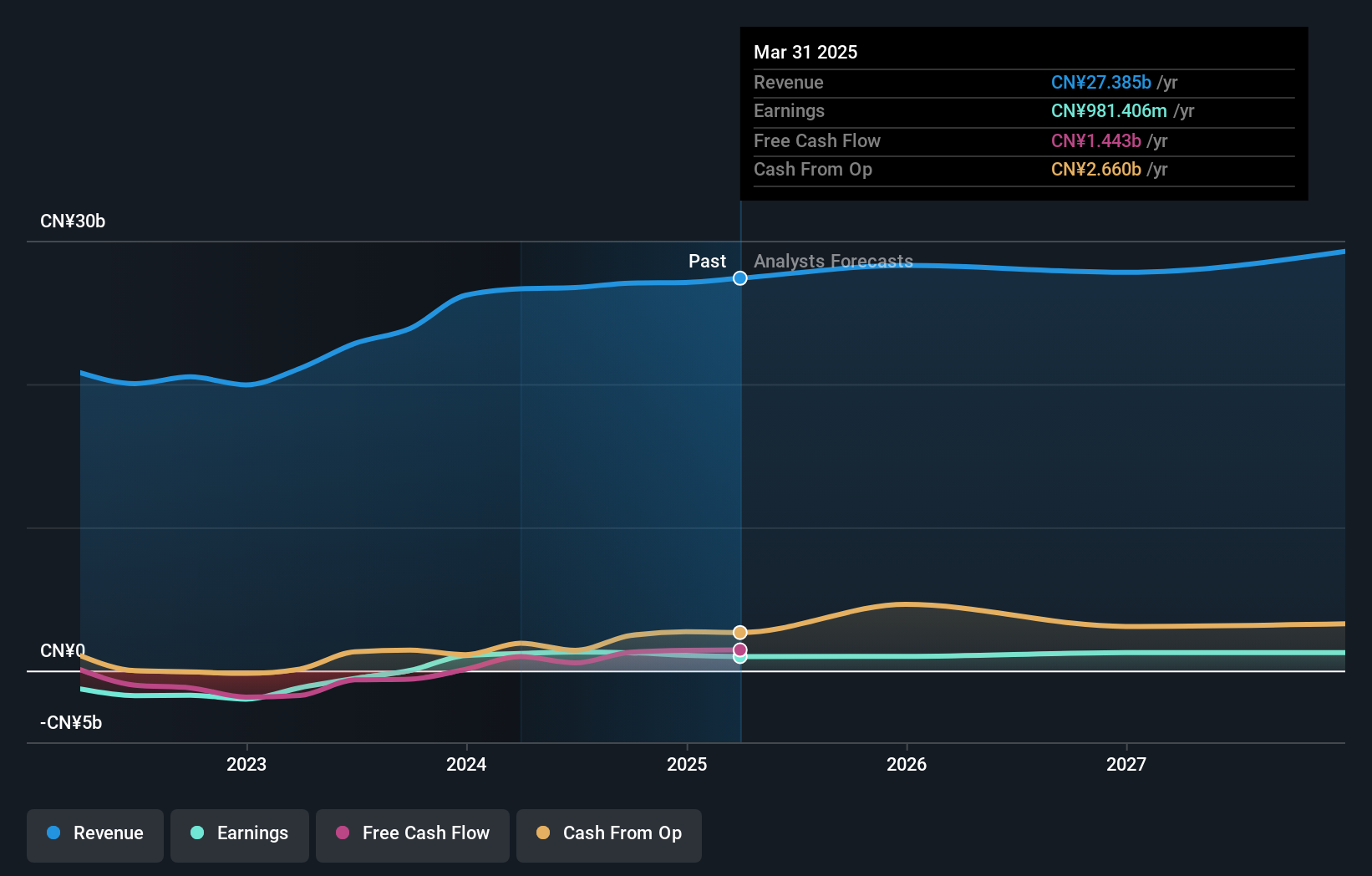- Hong Kong
- /
- Transportation
- /
- SEHK:525
Individual investors are Guangshen Railway Company Limited's (HKG:525) biggest owners and were rewarded after market cap rose by HK$2.3b last week
Key Insights
- Significant control over Guangshen Railway by individual investors implies that the general public has more power to influence management and governance-related decisions
- 51% of the business is held by the top 8 shareholders
- Institutions own 17% of Guangshen Railway
If you want to know who really controls Guangshen Railway Company Limited (HKG:525), then you'll have to look at the makeup of its share registry. We can see that individual investors own the lion's share in the company with 44% ownership. Put another way, the group faces the maximum upside potential (or downside risk).
As a result, individual investors were the biggest beneficiaries of last week’s 16% gain.
In the chart below, we zoom in on the different ownership groups of Guangshen Railway.
See our latest analysis for Guangshen Railway

What Does The Institutional Ownership Tell Us About Guangshen Railway?
Institutions typically measure themselves against a benchmark when reporting to their own investors, so they often become more enthusiastic about a stock once it's included in a major index. We would expect most companies to have some institutions on the register, especially if they are growing.
Guangshen Railway already has institutions on the share registry. Indeed, they own a respectable stake in the company. This implies the analysts working for those institutions have looked at the stock and they like it. But just like anyone else, they could be wrong. When multiple institutions own a stock, there's always a risk that they are in a 'crowded trade'. When such a trade goes wrong, multiple parties may compete to sell stock fast. This risk is higher in a company without a history of growth. You can see Guangshen Railway's historic earnings and revenue below, but keep in mind there's always more to the story.

Guangshen Railway is not owned by hedge funds. Guangzhou-Zhuhai Railway Company Limited is currently the largest shareholder, with 37% of shares outstanding. In comparison, the second and third largest shareholders hold about 2.8% and 2.7% of the stock.
On further inspection, we found that more than half the company's shares are owned by the top 8 shareholders, suggesting that the interests of the larger shareholders are balanced out to an extent by the smaller ones.
While studying institutional ownership for a company can add value to your research, it is also a good practice to research analyst recommendations to get a deeper understand of a stock's expected performance. There are a reasonable number of analysts covering the stock, so it might be useful to find out their aggregate view on the future.
Insider Ownership Of Guangshen Railway
While the precise definition of an insider can be subjective, almost everyone considers board members to be insiders. The company management answer to the board and the latter should represent the interests of shareholders. Notably, sometimes top-level managers are on the board themselves.
I generally consider insider ownership to be a good thing. However, on some occasions it makes it more difficult for other shareholders to hold the board accountable for decisions.
Shareholders would probably be interested to learn that insiders own shares in Guangshen Railway Company Limited. It is a pretty big company, so it is generally a positive to see some potentially meaningful alignment. In this case, they own around HK$405m worth of shares (at current prices). It is good to see this level of investment by insiders. You can check here to see if those insiders have been buying recently.
General Public Ownership
The general public, who are usually individual investors, hold a 44% stake in Guangshen Railway. While this group can't necessarily call the shots, it can certainly have a real influence on how the company is run.
Private Company Ownership
We can see that Private Companies own 37%, of the shares on issue. Private companies may be related parties. Sometimes insiders have an interest in a public company through a holding in a private company, rather than in their own capacity as an individual. While it's hard to draw any broad stroke conclusions, it is worth noting as an area for further research.
Next Steps:
While it is well worth considering the different groups that own a company, there are other factors that are even more important. To that end, you should be aware of the 1 warning sign we've spotted with Guangshen Railway .
But ultimately it is the future, not the past, that will determine how well the owners of this business will do. Therefore we think it advisable to take a look at this free report showing whether analysts are predicting a brighter future.
NB: Figures in this article are calculated using data from the last twelve months, which refer to the 12-month period ending on the last date of the month the financial statement is dated. This may not be consistent with full year annual report figures.
New: Manage All Your Stock Portfolios in One Place
We've created the ultimate portfolio companion for stock investors, and it's free.
• Connect an unlimited number of Portfolios and see your total in one currency
• Be alerted to new Warning Signs or Risks via email or mobile
• Track the Fair Value of your stocks
Have feedback on this article? Concerned about the content? Get in touch with us directly. Alternatively, email editorial-team (at) simplywallst.com.
This article by Simply Wall St is general in nature. We provide commentary based on historical data and analyst forecasts only using an unbiased methodology and our articles are not intended to be financial advice. It does not constitute a recommendation to buy or sell any stock, and does not take account of your objectives, or your financial situation. We aim to bring you long-term focused analysis driven by fundamental data. Note that our analysis may not factor in the latest price-sensitive company announcements or qualitative material. Simply Wall St has no position in any stocks mentioned.
About SEHK:525
Guangshen Railway
Engages in the railway passenger and freight transportation businesses in the People’s Republic of China.
Excellent balance sheet, good value and pays a dividend.
Market Insights
Community Narratives



